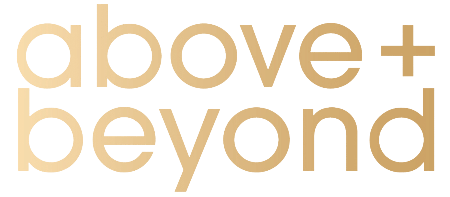Discover Corporate Hospitality ROI Strategies
Let’s Make It Happen
Unforgettable experiences. Exclusive access. Whether it’s front-row seats, VIP hospitality, or a bespoke getaway, we make it happen – just for you.
Start Your Journey →
Corporate hospitality budgets are under greater scrutiny than ever. Yet most programmes still rely on anecdotes rather than evidence. Research indicates that the vast majority of organisations hosting clients do not measure return on investment—a missed opportunity in a data-first commercial environment. This article outlines a practical, end‑to‑end model that tracks value from the moment you choose who to invite through to concrete commercial outcomes.
Key facts at a glance
- Topic: A complete ROI model for corporate hospitality, from invite to opportunity realisation
- Best for: Sales, marketing and client success leaders running hospitality or premium seat programmes
- Primary outcome: Evidence‑based decisions that link hospitality spend to pipeline, revenue and retention
- Typical measurement window: Immediate outcomes plus 12–24 months for lifetime value and churn analysis
- Core metrics: New revenue, deal acceleration, upsell/cross‑sell, retention, LTV, cost per acquisition and utilisation
- Data sources: CRM, booking/venue systems, attendance logs, guest feedback, finance and BI platforms
- Common pitfall: Inviting low‑value contacts and failing to capture data at every touchpoint
- Time to implement: 6–12 weeks for foundations; ongoing optimisation per quarter
The ROI journey: from invite to opportunity
A robust corporate hospitality ROI model starts well before the event and continues long after it. The following stages ensure you measure what matters and maximise outcomes.
Stage 1: Targeting and invitation
- Segment by value: Prioritise guests by potential lifetime value, decision authority and strategic fit. This requires CRM data and historical revenue patterns, not guesswork.
- Allocate budget intentionally: Weight premium experiences towards accounts with genuine upside; avoid uniform spend across all invitees.
- Match timing and format: Select experiences your audience values (board‑level preferences often differ from procurement or technical leaders), and align with commercial milestones.
Stage 2: Experience design and delivery
- Purposeful experiences: Venues and formats should enable meaningful conversation and shared memories, not just passive attendance. Experiential hospitality is delivering 6–12 per cent ROI growth for operators, driven by engagement and loyalty.
- Human + digital: Guests increasingly expect seamless, self‑service elements—contactless check‑in, digital passes—alongside attentive human hosting. The technology should reduce friction so your team can focus on relationships.
- Community cues: Curated moments—executive roundtables, behind‑the‑scenes access, or tailored tastings—create context for value‑led discussion and future collaboration.
Stage 3: Data capture and integration
- Instrument the journey: Capture attendance, guest engagement, meeting minutes, follow‑up actions, proposals raised and revenue influenced. Manual spreadsheets will not scale.
- Connect systems: Integrate venue/booking tools with CRM and analytics so event data enriches contact and account records automatically.
- Act in real time: Use alerts and simple automations to prompt same‑day follow‑ups, on‑site introductions or timely upgrade offers. Moving from batch reporting to live signals increases conversion and guest satisfaction.
For organisations looking to formalise this discipline, our corporate hospitality approach outlines how to align audience selection, experience design and data infrastructure around measurable outcomes.
What to measure: the metrics that matter
Immediate commercial outcomes
- New business revenue: Deals directly attributed to entertained contacts, with clear opportunity IDs and links to attendance.
- Deal acceleration: Reduction in days‑to‑close where hospitality is a touchpoint in the journey.
- Upsell and cross‑sell: Incremental revenue from existing customers engaged through hospitality.
Retention and loyalty
- Churn and renewal: Compare retention for entertained versus non‑entertained cohorts.
- Repeat business: Frequency and value of subsequent orders or projects from hosted customers.
- Customer lifetime value: LTV uplift over 12–24 months for contacts incorporated into hospitality programmes.
Operational efficiency
- Process efficiency: Digital adoption typically improves operational efficiency across hospitality operations, cutting manual tasks and streamlining guest management.
- Cost per acquisition: Benchmark hospitality‑influenced acquisition costs against other channels; personalised engagement can materially reduce CPA while lifting ROI.
- Utilisation and wastage: Track ticket utilisation, no‑show rate and reallocation speed to minimise waste.
Personalisation impact
- Preference‑led design: Menu, seating and activity choices tailored to guests’ stated preferences.
- Messaging relevance: Follow‑ups that reflect the discussions and interests recorded on the day.
- Loyalty indicators: Guest feedback, NPS for hospitality touchpoints and repeat attendance.
Data and technology foundations
Technology is only effective when it is joined up and adopted by the team delivering the experience. The following are non‑negotiables for reliable measurement.
- Integrated CRM and analytics: Bookings, guest lists and check‑ins should update contact and account records automatically, with dashboards tracking influence on pipeline and revenue.
- Self‑service as standard: Contactless entry, digital tickets and on‑site QR capture reduce friction and improve data quality.
- Real‑time activation: Lightweight AI and automation can surface in‑event triggers (early arrival, interest in a product area) and prompt hosts with timely actions.
- Staff enablement: Equip hosts with mobile access to guest profiles and playbooks; measure adoption, not just availability, of tools.
Commercial discipline: channels and costs
Distribution costs matter. Direct relationships with venues typically achieve materially lower costs than third‑party routes. Lower acquisition and distribution costs increase the proportion of budget available for guest experience—where value is created—and improve programme ROI.
Long‑term attribution and optimisation
- LTV over short‑term wins: Assess cumulative revenue from entertained customers over 12–24 months to capture the true effect of relationship‑led selling.
- Weighted attribution: Hospitality is one of several touchpoints. Use models that attribute proportionate value alongside email, meetings and proposals.
- Audit waste: Review attendance, engagement and outcomes quarterly. Identify segments with low conversion, events with poor fit and tickets prone to late drop‑off.
A practical roadmap you can start this quarter
- Audit your current state: Who do you host, at what cost, and with what outcomes? Quantify the data you are not capturing.
- Connect the data: Integrate booking tools with CRM and analytics; set up standard fields for attendance, intent signals and next steps.
- Define success measures: Baseline LTV, retention and sales cycle length for entertained vs. control cohorts.
- Sharpen targeting: Re‑weight invitations towards highest‑LTV segments and decision‑makers.
- Personalise the experience: Build simple preference capture and ensure hosts use it on the day.
- Close the loop: Automate follow‑ups within 24 hours; review performance every quarter and reallocate budget towards proven formats.
2025: what good looks like
The strongest programmes in 2025 blend experiential value with real‑time responsiveness. Venues act as social anchors for purposeful conversation; technology removes friction; teams are enabled to act on live signals. Even a single automated workflow—such as prompting hosts when a high‑value guest arrives—can unlock measurable gains. Above all, organisations that consistently measure, learn and reallocate will out‑perform those relying on intuition alone.
Above + Beyond Tip: Talk to us about The Corporate Hospitality ROI Model: From Invite to Opportunity hospitality or premium seats that prove their value.
FAQs: The Corporate Hospitality ROI Model: From Invite to Opportunity
Begin with a clean guest list mapped to CRM contacts, attendance status, host notes on intent, and the linked opportunities for 6–12 months post‑event. You can enrich with engagement scoring and feedback later.
Some deals will accelerate immediately, but a fair assessment requires a 12–24 month window to capture renewals, upsell and lifetime value effects.
Yes. Smaller programmes can achieve strong ROI by improving targeting, eliminating no‑shows and focusing on disciplined follow‑up and attribution at contact level.
New revenue influenced, deal acceleration, upsell/cross‑sell, retention and LTV uplift—supported by utilisation and cost per acquisition to evidence efficiency.
Use weighted attribution that credits hospitality proportionally with emails, meetings and proposals. Consistent CRM hygiene (dates, attendees, outcomes) is essential.
A connected CRM, a simple event/guest management tool, reliable check‑in (QR or NFC), and dashboards that surface pipeline and revenue influence by event and segment.
Confirm attendance earlier, maintain waitlists, automate reminders, and reassign unconfirmed tickets 48–72 hours prior. Track no‑show patterns to refine targeting.
Transform Your Corporate Hospitality Approach
Learn how to strategically use hospitality to boost business relationships and drive opportunities.

Above + Beyond
Welcome to the Best the World has to Offer. With over 30 years of experience, we're the trusted name in sports hospitality and bespoke experiences at the world's most iconic events.

Our Latest INSIGHTS
Timely takes. Trusted voices. Unmissable stories.


